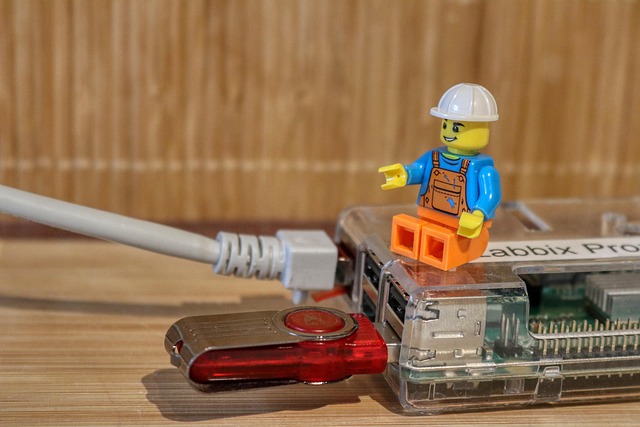Self-Cleaning Potties: Get Best Prices for Odor-Free Events

Self-cleaning portable potties with odor control technology transform sanitation at events and remot…….
In an era where sustainability, hygiene, and innovation converge, portable potties equipped with odor control and self-cleaning technology have emerged as game-changers in the sanitation industry. These advanced toilet systems are designed to address the growing demand for clean and fresh portable sanitization options, particularly in outdoor settings, remote locations, and regions facing water scarcity. This article aims to delve into the intricacies of this cutting-edge technology, exploring its historical development, global impact, economic implications, and future potential. By examining various aspects, from technological breakthroughs to regulatory frameworks, readers will gain a comprehensive understanding of how these portable potties are reshaping sanitation practices worldwide.
Portable potties with odor control and self-cleaning technology refer to innovative toilet systems designed for outdoor or temporary use, offering enhanced hygiene and comfort while minimizing environmental impact. These potties typically consist of several key components:
Sanitation Chamber: The core unit is a sealed, portable toilet chamber equipped with a seat and collection mechanism. It can be made from durable materials like plastic or composite to ensure portability and longevity.
Odor Control System: This is the heart of the technology. It employs various methods, such as:
Self-Cleaning Mechanism: To maintain hygiene, these potties employ automated cleaning processes:
Waste Collection and Processing: The collected waste is contained in a sealed tank, which can be removed and processed off-site using eco-friendly methods. Some models employ biological processes or specialized chemicals to break down waste rapidly.
The concept of portable sanitation has been around for centuries, but the integration of odor control and self-cleaning technology is a relatively recent development. Early portable potties were little more than outdoor toilets placed in public spaces, often lacking proper hygiene features. In the 1970s, with growing environmental concerns and a need for cleaner alternatives, manufacturers started experimenting with odor control mechanisms using carbon filters and antimicrobial coatings.
The turning point came in the late 2000s when technological advancements allowed for more compact and efficient systems. Innovations like automated disinfection sprayers, self-cleaning seats, and improved waste processing methods made portable potties more hygienic and user-friendly. Today, these toilets are not just functional but also environmentally friendly, using less water and offering sustainable waste management solutions.
Portable potties with odor control and self-cleaning technology have gained significant global traction due to their ability to address critical sanitation challenges in various regions:
| Region | Market Growth (2020-2025) | Key Drivers |
|---|---|---|
| North America | 12.5% CAGR | Growing outdoor recreation and water scarcity concerns |
| Europe | 15% CAGR | Strict environmental regulations and urban sanitation needs |
| Asia-Pacific | 18% CAGR | Rapid urbanization and off-grid development |
| Middle East & Africa | 10% CAGR | Desalination projects and outdoor event industries |
| Latin America | 9.5% CAGR | Tourism sector growth and public health initiatives |
The adoption and specific features of these portable potties vary across regions:
North America: Known for its advanced technology, the region prioritizes eco-friendly designs with automatic flushing systems and carbon filter odor control. Outdoor recreation and music festivals drive market demand.
Europe: Stricter environmental laws have led to widespread adoption of self-cleaning potties with advanced waste processing capabilities. These toilets are often used in urban settings, public parks, and construction sites.
Asia-Pacific: Rapid urbanization has sparked a need for portable sanitation solutions, with manufacturers focusing on compact designs and affordable pricing.
Middle East & Africa: Desalination plants and outdoor events create a unique demand for quick-to-deploy, high-capacity potties with advanced odor control.
Latin America: Tourism and public health initiatives drive the market, with an emphasis on color options and cultural designs to enhance user experience.
Several key trends are shaping the future of portable potties:
Sustainability Focus: There is a growing demand for eco-friendly materials and processing methods, leading to innovations in biodegradable waste bags and renewable energy sources for off-site processing.
Smart Toilet Technology: Integration of IoT (Internet of Things) sensors for real-time monitoring of sanitation levels and user analytics is gaining traction, especially in urban settings.
Customizable Designs: Manufacturers are offering tailored solutions for specific industries, such as music festivals, sports events, and construction sites, catering to unique requirements.
Off-Grid Solutions: With the rise of remote living and outdoor adventures, portable potties with independent power sources and solar panels are gaining popularity.
The global portable potties market has experienced steady growth, driven by increasing urbanization, water scarcity concerns, and outdoor activity trends:
Investors are drawn to this sector due to:
However, challenges exist:
Portable potties with odor control technology play a significant role in:
The continuous innovation in this field has led to several breakthroughs that enhance performance and user experience:
Future technological advancements may include:
The development and deployment of portable potties are subject to various policies and regulations worldwide, ensuring safety, environmental protection, and public health standards:
Local governments play a crucial role in regulating and implementing these technologies:
Despite their numerous benefits, portable potties with odor control and self-cleaning technology face several challenges:
Addressing these challenges requires a multi-faceted approach:
Case Study: Coachella Valley Music and Arts Festival, USA
Coachella, one of the world’s largest music festivals, implemented a comprehensive portable sanitation strategy during its annual events. They deployed advanced odor control potties with automatic cleaning systems, ensuring a fresh and hygienic environment for attendees. The festival’s success lies in:
Case Study: Xavante Tribe, Brazil
In the remote Xavante tribe’s territory in Brazil’s Amazon rainforest, a sustainable sanitation solution was introduced to replace traditional pit latrines. The portable potties with self-cleaning technology and odor control were tailored to the community’s needs:
Case Study: Dubai Creek Tower Project, UAE
The construction of Dubai’s iconic Creek Tower required a robust sanitation solution for the vast site. Portable potties with odor control and self-cleaning technology were deployed, addressing critical health and safety concerns:
The future of portable potties with odor control technology looks promising, with several growth areas and emerging trends:
Future research should address:
Portable potties with odor control technology have evolved significantly, addressing critical sanitation challenges worldwide. With continuous innovation, improved economic viability, and growing global awareness of sustainability, these solutions are poised for widespread adoption. Overcoming initial cost barriers, maintaining user acceptance, and ensuring environmental stewardship will be key to unlocking the full potential of this technology in shaping a cleaner, healthier future.

Self-cleaning portable potties with odor control technology transform sanitation at events and remot…….

Revolutionary portable potties with built-in odor control and self-cleaning technology are transform…….

Advanced portable potties with odor control and self-cleaning technology are transforming public san…….

Advanced portable potties with odor control and self-cleaning technology revolutionize event hygiene…….

Transform event hygiene with portable potties featuring advanced odor control and self-cleaning tech…….

Advanced portable potties with self-cleaning tech and odor control systems offer eco-friendly, hygie…….

Advanced portable potties with odor control and self-cleaning technology are revolutionizing sanitat…….

Advanced portable potties with odor control and self-cleaning tech revolutionize outdoor sanitation,…….

Advanced portable potties with odor control and self-cleaning technology revolutionize sanitation at…….

Festival organizers face challenges with traditional portable sanitation, leading to unsanitary cond…….